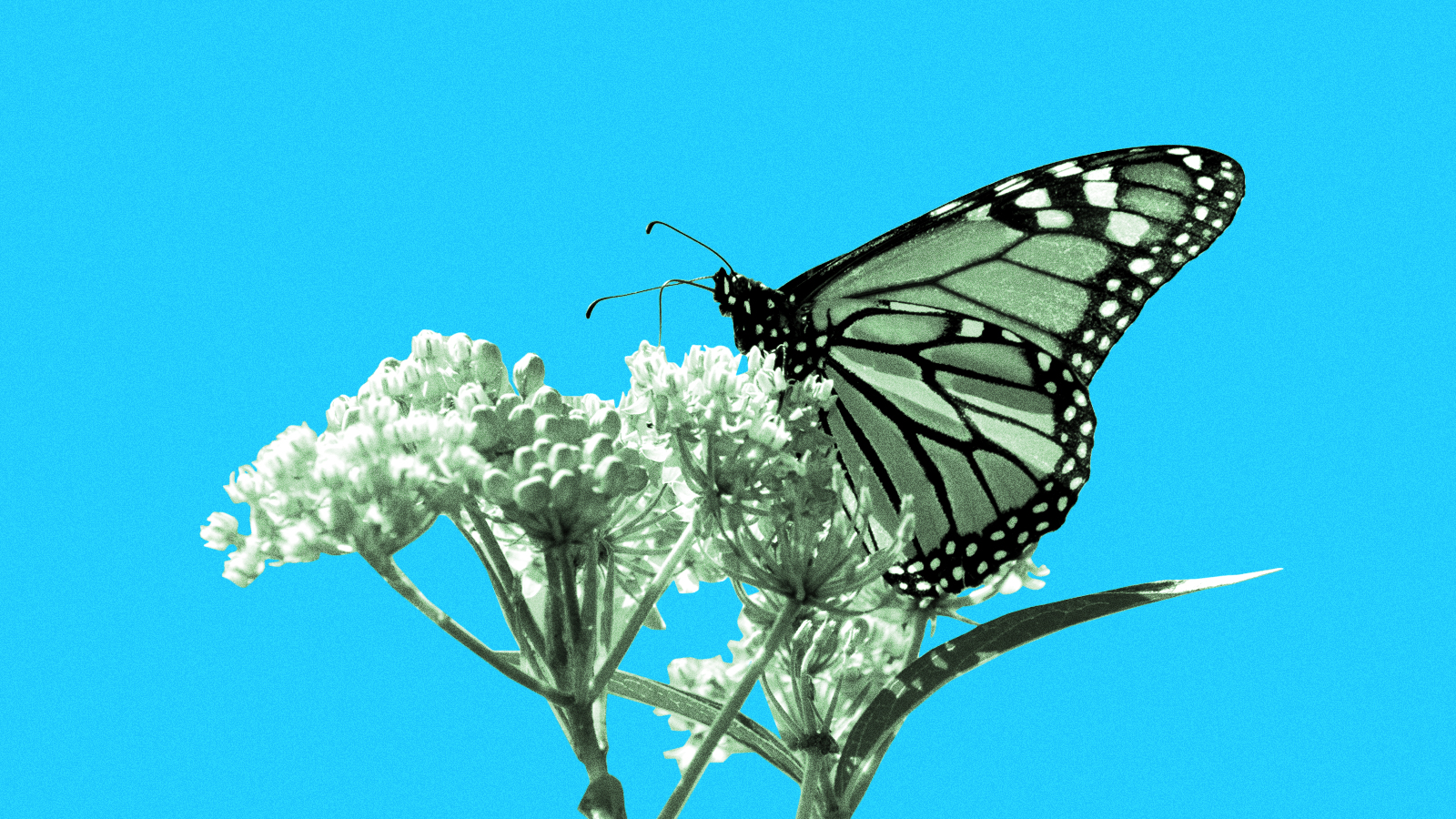A short list of things for which you can thank a pollinator: The apple slathered in almond butter that got you through the end of a 10-hour work day, the shot of tequila that finally pushed you onto the dance floor at Beyoncé night, and the lavender in that $12 pint of small-batch gelato that eased you through your last breakup.
Pollinators provide one out of every three bites we eat, yet it’s no secret that they’re seriously struggling. From colony collapse disorder decimating bee populations to monarch butterfly populations declining by 95 percent, many pollinators are in big trouble. Heck, the rusty-patched bumblebee even recently landed on the endangered species list.
But there is hope yet! Pollinator gardens, those big bountiful messes of plants chock full of nectar and pollen, are one way to create healthy ecosystems that attract creatures like hummingbirds, bees, bats, moths, and butterflies. And — red hot civic alert — they work better as a community effort. So even if you don’t have a yard, you can help make your neighborhood more pollinator friendly.
1. Grow your community. Remember when you met your neighbors? Planting a pollinator garden is an excellent opportunity to work together. Plus, pollinator gardens are most effective when part of a larger wildlife corridor. Road medians and farmland make great spaces for pollinator gardens, too, so look around and see who’s willing to pitch in or open a little of their land.
Naturally, it’s best to source native plants. For help, consider striking up a conversation with a few vendors at your local farmers market, contacting your state’s native plant society, or reaching out to a public university extension office in your area (keep your eyes peeled for seasonal plant sales, too).
Stop by the library and snag a few books about gardening and activism while you’re at it, like Greening Cities, Growing Communities.
2. Join a bigger movement. Grassroots efforts across the country are changing how we protect our pollinators. One Minnesota group nudges local governments to include pollinator gardens in city parks. More than 800 North Carolinians committed to planting pollinator-friendly gardens of all sizes to create the Butterfly Highway. Is there anything you could join or replicate in your community? As Wendell Berry, the great environmentalist and writer, once said: “Gardening has a power that is political and even democratic. And it is a political power that can be applied constantly, whereas one can only vote or demonstrate occasionally.”
3. Get to know your farmer (outside of the farmers market, that is). While smaller gardens are one road on the long journey toward species recovery, farmlands are the superhighways. Pollinators like the monarch butterfly are finding unlikely allies in farmers, ranchers, and forestland owners, thanks to partnerships with national organizations like the Environmental Defense Fund (EDF). Through EDF’s Monarch Butterfly Habitat Exchange, landowners earn credits that they can sell to compensate for the work that it takes to restore and conserve milkweed habitat — the only host plant for the butterflies — across their property. A pilot program of the Monarch Habitat Exchange is currently underway in Texas, and EDF hopes to officially launch the program sometime this year.
“There was some modeling done by the U.S. Geological Survey looking at if we want to save the monarch butterfly, where do we get the most bang for our buck?” Ed Spevak, who manages the St. Louis Zoo’s Center for Native Pollinator Conservation, told the Columbia Missourian last year. “The only way it worked is for everybody to be involved, and that’s the beauty about pollinator conservation. Everybody can get involved, and everybody can be a pollinator conservationist.”
You’ll get offline, meet your neighbors, and help out critically important species. That sweet buzz you’ll feel is the product of straight civic engagement, pals.
Through an EDF program they call “habitat exchange,” farmers and ranchers in America’s heartland earn income for planting and protecting milkweed habitat on their land. The more you give, the more monarch habitat you’ll conserve — and the more farming families you’ll help. Donate here.



